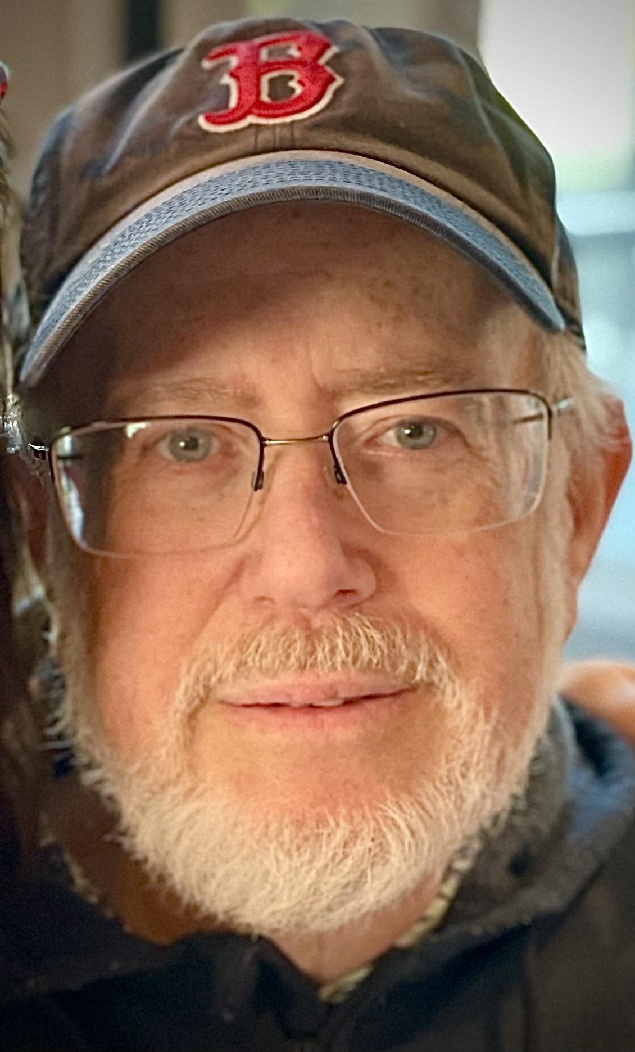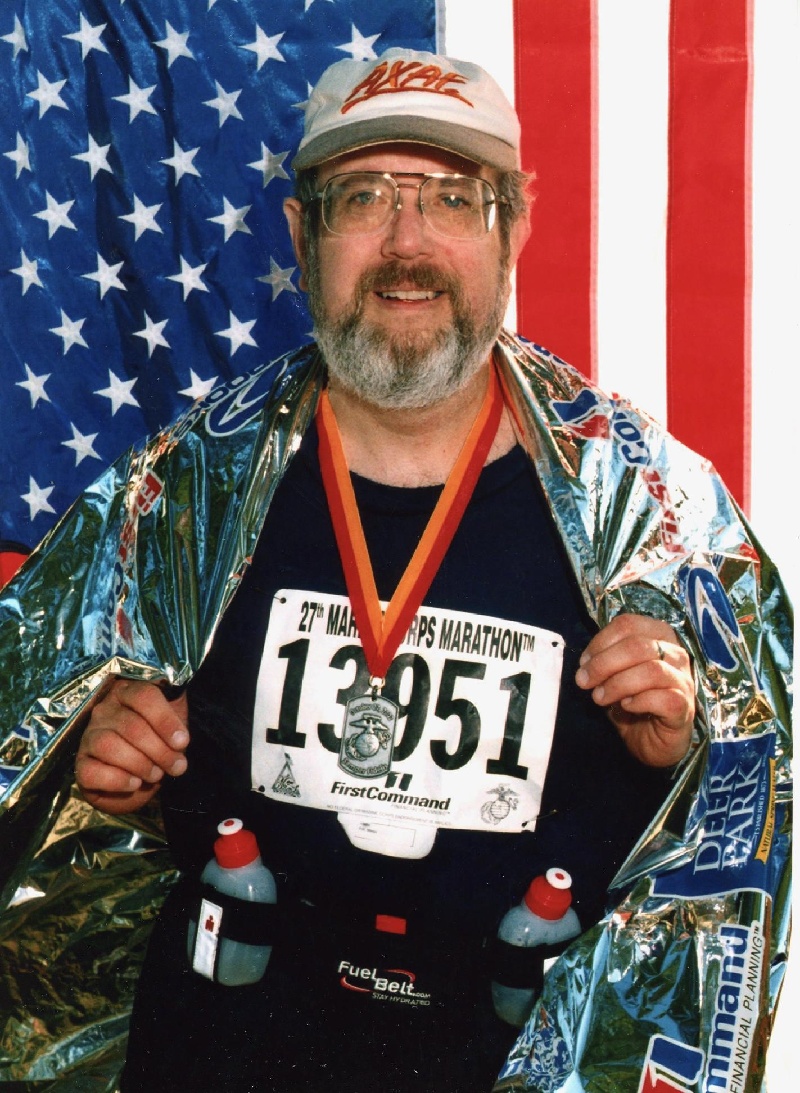Eric Martin (1955 – 2023)
Paul Viens
On August 16th, 2023, the Chandra Flight Operations Team (FOT) lost one of its long-time members, a valued colleague, friend, and mentor to many. Eric Martin passed away after a short but courageous battle with cancer.
Eric's career with TRW/Northrop Grumman spanned almost 40 years. After receiving his PhD in Astrophysical Sciences from Princeton, Eric landed at TRW's Space Park facility in Redondo Beach, CA. There, he worked on a number of national-interest civil and defense projects in the areas of spacecraft Guidance, Navigation, and Control (GNC) and flight software development. This time included work on flight software development for the Compton Gamma Ray Observatory (CGRO), one element of NASA's four "Great Observatories." In December 1993, Eric joined the flight software development team for the Advanced X-ray Astrophysics Facility (AXAF), later to be renamed as the Chandra X-ray Observatory (CXO) and another of NASA's "Great Observatories." In this role, he worked on Pointing Control and Aspect Determination (PCAD) subsystem design, coding, and analysis efforts. In October 1997, Eric transitioned to the Chandra Operations Control Center (OCC) in Cambridge, MA to support CXO launch activities, and had been an integral member of the Flight Operations Team since then. He wore many hats on the team, contributing to a wide range of topics and mission achievements. While his primary efforts focused on the PCAD subsystem, he also provided FOT expertise and leadership for the Aspect Camera Assembly (ACA), space weather, and on-board radiation monitoring/safing systems including the Integrated Electron Proton Helium Instrument (IEPHIN) unit, the Propulsion subsystem, and the Communications/Command/Data Management (CCDM) subsystem. He was also a critical resource supporting fault management and flight software maintenance endeavors, and he provided highly effective support in the backup Lead Systems Engineer role.
Throughout his time on the Chandra program, Eric was a stalwart steward of the PCAD subsystem and its contributions to the high level of pointing accuracy and stability that has benefited the mission immensely. He meticulously monitored a myriad of system performance parameters and was quick to recognize emerging trends and issues. While able to dig deeply into the heart of any hardware/software issue that might arise to fully characterize and understand it, he would also be able to see the "big picture" of implications to routine mission operations and longer-term science mission goals when recommending and implementing a course of action. Whether it was a minor control law parameter update, significant operating mode changes and sensor calibration overhauls, or wholesale swaps to backup systems (e.g., gyros, fine sun sensors, momentum unloading thrusters), Eric played a huge role in making sure the end goals were successfully and safely achieved. When anomalies struck, there was often a PCAD-related aspect that needed to be investigated or managed as part of the recovery. At these times, the full scope of Eric's capabilities would be brought to bear on the problem as he diligently assessed system behavioral issues and flight code to help the team focus in on the root cause of the anomaly and how to effectively return the spacecraft to its science mission activities. Eric spent many long days, nights, and weekends analyzing data and conducting investigations with the spacecraft simulator, where he effectively used his extensive technical expertise, attention to detail, and depth of understanding to propose and implement detailed and creative solutions to engineering and operational problems. Many a time, after a 15-hour anomaly response/recovery session, Eric would be the last one to leave the party, trying to tease out the last bit of knowledge from spacecraft telemetry or working on new commanding products to be used the next day. Getting email from Eric in the middle of the night—with a status update or new idea or recommendation—was not uncommon.
Eric was an authority and go-to mission resource for many technically challenging projects beyond PCAD, with the ability to take issues back to first principles to find alternative and innovative solutions. One of the best examples of his broad reach concerns the spacecraft's radiation monitoring capabilities. Automated on-board protection from solar flares and other high radiation events was a crucial capability built into the Chandra observatory. However, when the on-board radiation sensor (IEPHIN) began to exhibit performance issues early in the mission due to elevated temperatures, Eric collaborated closely with the unit designer and Science Operations Team (SOT) personnel to repeatedly find ways to reconfigure the unit's detectors and settings to continue to provide useful outputs and extend its life for years, even as temperatures ultimately reached 30 to 40 degrees Celsius above the original maximum limit for the unit. With an eye to the future, Eric also diligently worked to recode the Radiation Monitor (RadMon) software to pull in detector and status information from the primary science instruments to augment Chandra's radiation protection capabilities. As part of this effort, he set up the code to be able to logically switch off the use of IEPHIN and HRC inputs should the day come when either unit could no longer be used. Eventually those days did come, and the groundwork that Eric had done years earlier was crucial towards minimizing the mission impact.
Collaborative teamwork has been a hallmark of the Chandra mission's continued success, and Eric played a major role there as well. In addition to his generous mentoring of more junior team members over the years, he was also responsible for leadership of, contributions to, and successes by a number of key working groups. These included the Star Selection & Acquisition Working Group (SS&AWG), focusing on ACA/star tracking issues and performance of other PCAD sensors (e.g., gyros, sun sensors); the Radiation Working Group, focusing on Chandra's unique orbit and its interaction with the space environment; and the Science Only Safing Action (SOSA) Working Group, which focused on a fundamental change in on-board response to issues like high radiation shutdowns to improve spacecraft safety and mission recovery timelines through an extensive set of spacecraft, ground system, and operational process changes. In these arenas, Eric reliably contributed his knowledge and skills to solve the many challenges at hand, but he was also quick to acknowledge and recognize other team members for their critical contributions and achievements.
Besides being a careful caretaker of the observatory, Eric was also keenly interested in the science results of the mission, attending many conferences and symposia where the results of Chandra observations were being presented. Everywhere he went, from these formal academic settings to his running the Marine Corps Marathon (which he did in 2002), he was an ardent and vocal supporter of Chandra and its mission. From early in the mission, he worked closely with SOT members to find ways to extract even more science results from the mission than originally planned. A pinnacle of his contributions in this area might be the VGUIDE effort, a project to use ACA guide star tracking data to identify and characterize hundreds of variable stars. His detailed knowledge of this class of stars, combined with his expertise with the ACA and his data analysis acumen, contributed significantly towards the generation and publication of a Chandra-based catalog.
While Eric had a deep sense of commitment and dedication to the mission, he had a wide variety of interests beyond Chandra. He was tremendously dedicated to his beloved wife and family, and he greatly enjoyed time spent with his canine friends. His love of plants was evident by the jungle one often had to navigate to meet with him in his office. His globe-trotting trips with his small telescope to personally catch solar eclipse events were a source of many adventures. He also had a keen interest in the Chinese language and character calligraphy, and his musical interests spanned the latest K-pop groups to learning and mastering the intricacies of the ukulele. He was a dedicated Red Sox fan. And for those who had worked at the Chandra OCC on Hampshire Street, who can forget the menagerie of origami creatures that he would create and leave scattered in the conference rooms, on the control room consoles, and around the spacecraft simulator work areas.
When I reflect on the recent 24th anniversary of Chandra's launch, I can't help but think about all of the tremendous contributions Eric made to the mission over the years. From his coding, design, and analysis work during the development of the observatory, through the dedicated and meticulous support to Chandra's launch, to the wide-ranging engineering and science achievements he realized over the years, the mission could not have delivered its outstanding performance and lasting legacy without him. I personally appreciate and respect the depth and breadth of knowledge and creativity he brought to the team, his tenacious spirit for doing what's right and best for the mission, his willingness to share his talents through the mentoring of other team members, and the support he provided to me in many, many ways. While he may now be gone from us, his legacy of accomplishments, personal inspiration, and camaraderie will endure.
Ad astra, Eric.

